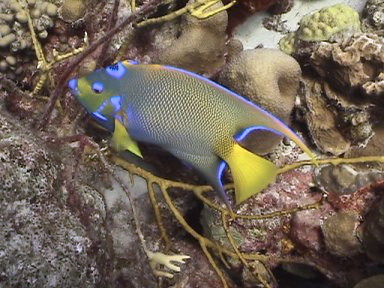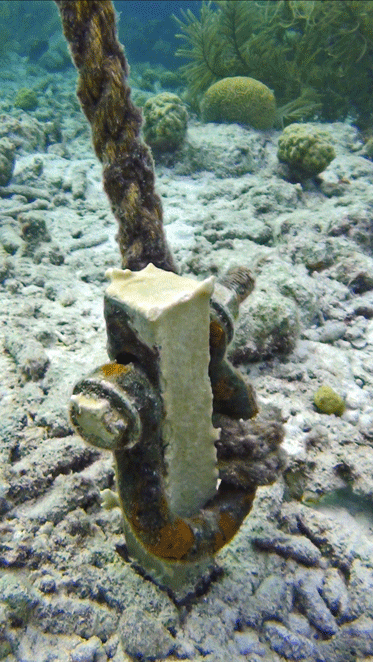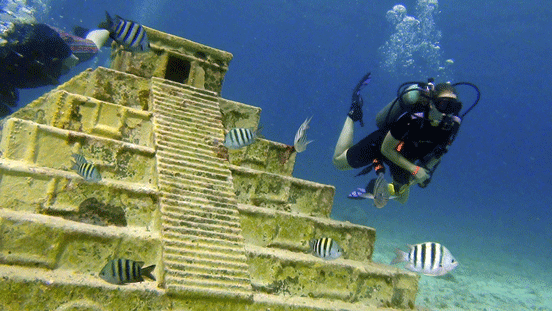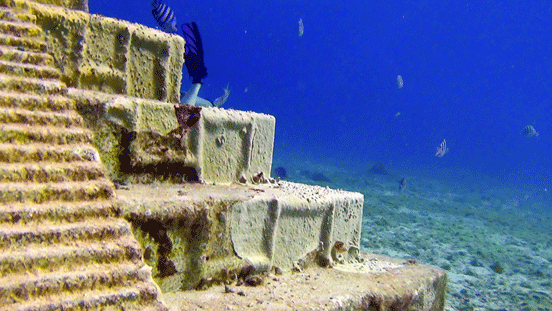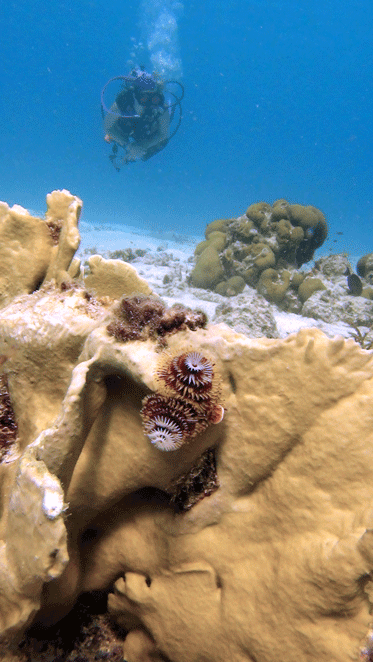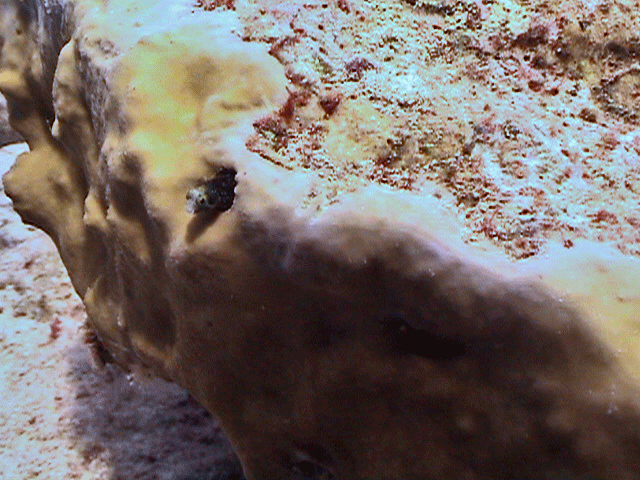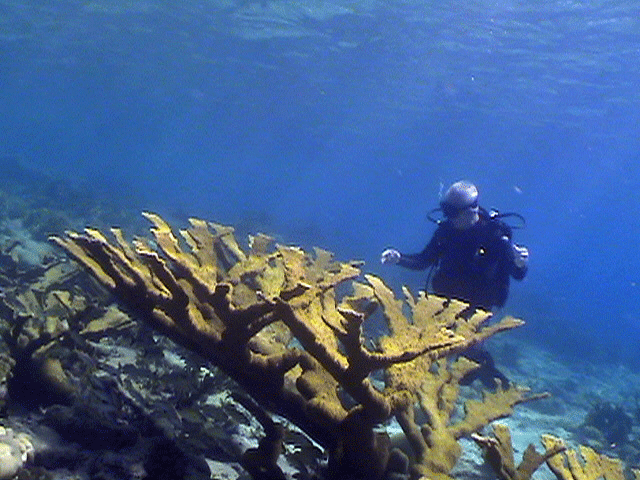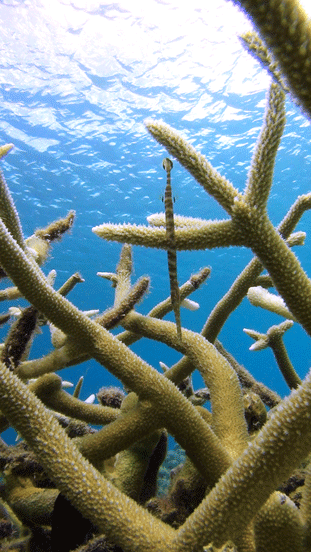 By Mike Endrizzi, DVM, Master Scuba Diver When enjoying the ocean, whether we are walking along the beach, swimming or diving, we can come into contact with some of the many venomous marine animals that live in the ocean. Sea Snakes, Lionfish, Sting Rays, Sea Urchins, Jellyfish, the Blue Ring Octopus and more. But the most commonly seen venomous creature in the ocean is fire coral. Fire coral stings can cause severe burning sensation for a few hours to days. I chose to do a page on fire coral because a few people that I have been diving with seem to be confused on what fire coral is and how to identify it under water. A few of these divers had logged over 200 dives. So, I have taken some pictures of fire coral to put together with some information that may help divers be more knowledgeable about this type of coral. |
||||||||||||||||
|
The topics on this page will include: Treatment of Fire Coral StingsWhen to Seek Medical Care
|
 |
|||||||||||||||
| In the above picture you can see two types of fire coral. The blade fire coral is in the center of the picture and some branching fire coral is seen to the right of it. | ||||||||||||||||
|
Fire coral derives its name from the intense burning sensation one gets when you touch or brush up against it. Fire coral, like all coral, falls into the animal kingdom. Many people think of coral as plants or sometimes mineral formations but they are part of the Kingdom Animalia. For those scientific nomenclature and taxonomy:
|
|
A Queen Angel Fish swims in front of some thin branching fire coral. | ||||||||||||||
|
|
Here you can see a branching fire coral growing on the floor of the ocean surrounded by sand. | |||||||||||||||
|
Like all corals, fire corals are made up of many live polyps. The polyps of fire corals are near microscopic size and are usually embedded in the skeleton and connected by a network of minute canals. To the naked eye, all that is visible on the smooth surface are pores. In fact, Millepora means ‘thousand pores’. There are different types of spores on the surface of the fire coral one type is called dactylopores. The dactylopores have long fine hairs that protrude from the skeleton. The hairs possess clusters of stinging cells (nematocysts). These hairs capture prey, which is then engulfed by gastrozooids, or feeding polyps, situated within the gastropores (the other type of pores found in fire coral). The fine hairs protruding from the dactylopores also inflict the stings on human skin. Besides capturing prey, fire corals gain nutrients through a symbiotic relationship with algae known as zooxanthellae. The zooxanthellae live under the clear skin of fire coral, and provide the coral with food, which they produce through photosynthesis. In return, the coral provides the algae with protection and access to sunlight which the zooxanthellae require for survival. The amount and type of algae will contribute to the color and appearance of the coral. Reproduction in fire corals is more complex than in other reef-building corals. The polyps reproduce sexually, producing jellyfish-like medusae, which are released into the water from special cup-like structures known as ampullae. The medusae contain the reproductive organs that release eggs and sperm into the water. Fertilized eggs develop into free-swimming larvae that will eventually settle on the substrate and form new colonies. Fragmentation of the main colony is another possible method of asexual reproduction, and most imported specimens arrive as pieces broken off a larger colony. |
||||||||||||||||
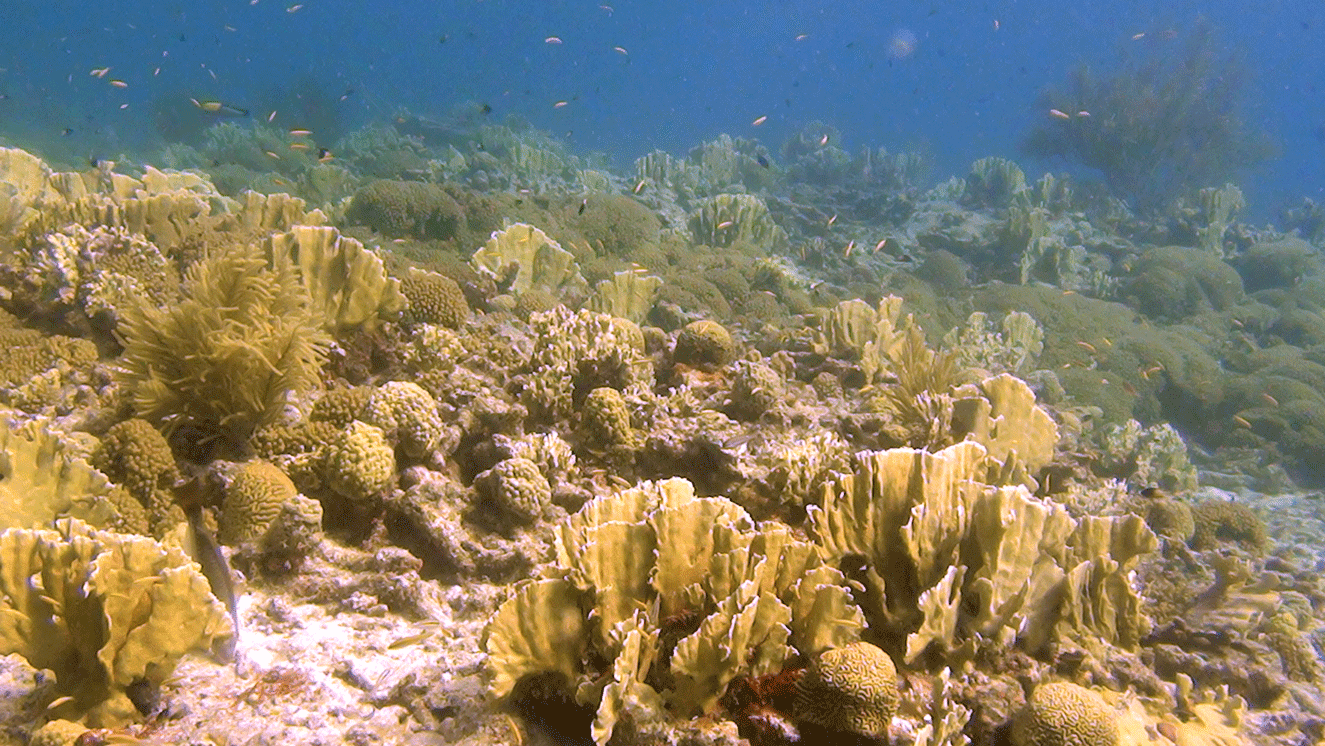 |
Fire coral is found in tropical waters around the world. Since the majority of my diving has been in the Caribbean Sea and Florida I will concentrate on the types of fire coral located in these areas. It grows in warm waters where tidal currents can provide them with nourishment. They can be found in shallow lagoons and waters along the shore line. Their habitat can extend down to deeper than 100 feet below the surface. Since the zooxznthellae require sunlight, most fire coral will be found in areas of clearer water where direct sunlight is available. |
|||||||||||||||
| This shows a lot of blade fire coral mixed in with
other types of coral in shallow waters.
|
||||||||||||||||
|
Fire corals are sessile (fixed in one place) creatures that can attach to rocks, coral, seaweed, pilings, artificial reefs or man-made structures. The shape can vary. Most common types are either branching or blade shaped coral, however, fire coral can encrust many existing structures like dead coral, rocks, moorings, pilings, ship wrecks or other objects found underwater. These encrusting forms of fire coral can take on the shape of whatever object they are covering. The types of fire coral found in the Atlantic Ocean, Caribbean Sea and Gulf of Mexico are a mustard yellow to light tan color with white tips. It will usually appear to have a smooth satin-like surface. Upon close observation when conditions are right, you may be able to see the very fine hair-like structures that create a fuzzy look to the surface. These are the structures that sting the skin if you come into contact with the coral or if you come close enough to contact the stingers. |
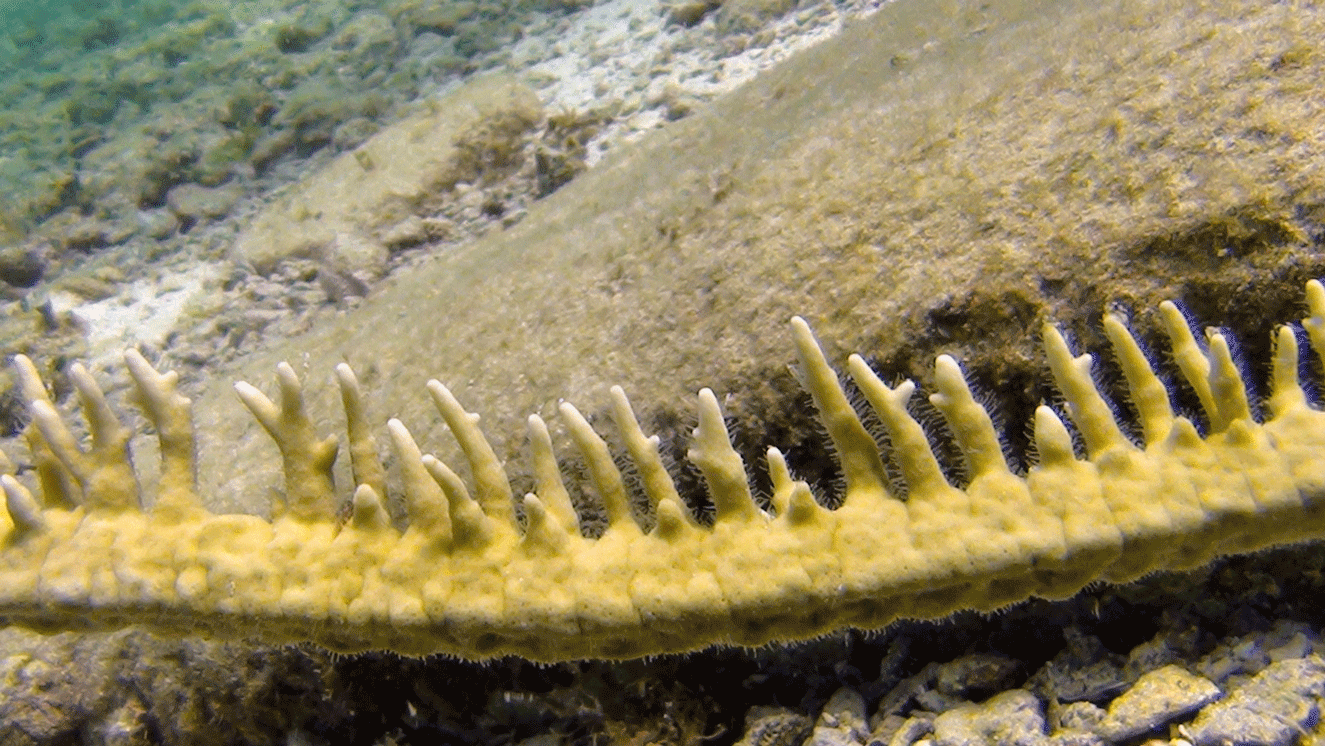 In
this picture you can see the thin stinging threads (cnidae) protruding
from the branching fire coral. |
|||||||||||||||

This pictures shows many of the cnidae (stingers) extending from the
surface of the fire coral.
|
The painful stings of M. alcicornis are inflicted using the cnidae (stinging threads), which are released from a cnidoblast on its surface. These are used to stun prey. Fire coral have minimal systemic toxicity to humans. Therefore, they won’t have life threatening affects unless there is an allergic reaction to the venom or anaphylactic shock. Usually, the most serious effects seen after extensive stings are possible nausea and vomiting for two to three hours afterwards. The sting caused by these animals is a result of the injection of a water-soluble, heat affected, proteinaceous toxin. These organisms inflict predominantly local pain, usually described as stinging or burning, and possible rash or blisters. In severe cases the sting can leave a scar on the skin but in some cases there is no visible change to the skin, only the pain and burning. The sting may be felt immediately upon contact with the fire coral or the sensation may be delayed depending on when the cnidae release their venom. Some people report having an itching sensation at first which quickly turns to a painful burn when they scratch the area. The scratching can cause the release of more venom and exacerbate the symptoms. Symptoms normally disappear within 24 hours. |
|||||||||||||||
|
Treatment of Fire Coral Stings The following guidelines are suggested:
|
 |
|||||||||||||||
| Fire Coral often encrust other objects in the water. Here are two examples of fire coral encrusting the surface of a wreck, on the lower half of the port hole in the picture above and on the upper right side of the port hole below. | ||||||||||||||||
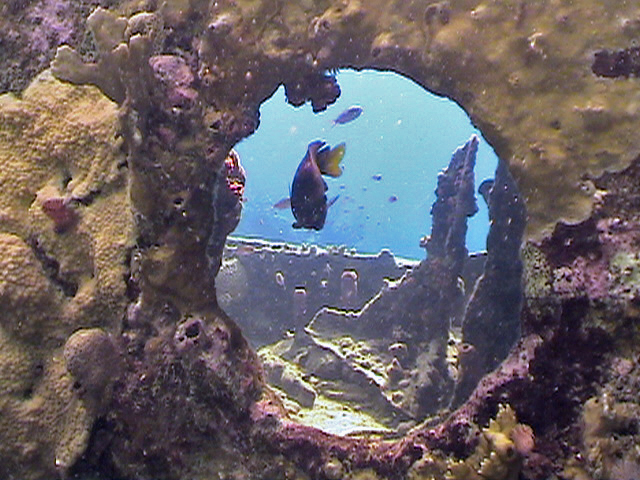 |
||||||||||||||||
|
In this picture we see a large opening in a wreck encrusted by fire coral. This can be very dangerous for divers that penetrate the wreck. It is very easy to inadvertently brush up against the side of the opening with an arm or leg. Since this fire coral normally grows on the outside of the structure where it is exposed to sunlight, a diver who is exiting a wreck through an opening like this may not see the fire coral and decide to touch the opening to steady himself as he passes through the opening or to pull himself out without using his fins. |
|
|||||||||||||||
|
Prevention of fire coral stings is much better than treating a sting. There are many ways to avoid being stung. First, I want to stress that divers, snorkelers or people wading or swimming in the ocean should never touch live coral. There are a few reasons for this. The pressure from touch, whether it be from your fingers or other body parts or from a piece of equipment, like a flash light, fins, camera or tank banger, can crush and kill the coral. Oils or microorganisms that are normally found on human skin can also kill coral. Another reason to not touch coral is because of what the coral can do to you. Fire coral and some other types can cause injury to the diver. In order to protect the fragile coral in the ecosystems of our reefs and to prevent injury to divers, never touch the coral.
It is very important that divers not be careless and damage the coral. It is also important that you do not get injured by the coral. Even when people take all the precautions to avoid contact with the coral, there will be times when accidental contact may take place. Being able to recognize fire coral in the area should make you even more cautious. Learn to look for and be aware of fire coral when you are in the ocean. This can be in areas that people don’t normally expect to find it. In shallow areas near the shore there can be fire coral on rocks, dead coral man-made structures or other solid objects. If you are entering the ocean on a shore dive, swimming or just walking in the water, watch for fire coral. It is usually most common in clear water so that makes it a little easier to see in many cases. When you know that there is a higher risk of contact with fire coral the use of exposure protection such as full body wet suits or even lycra dive skins is recommended. Times when you may expect an increased risk might include:
|
||||||||||||||||
|
Remember:
|
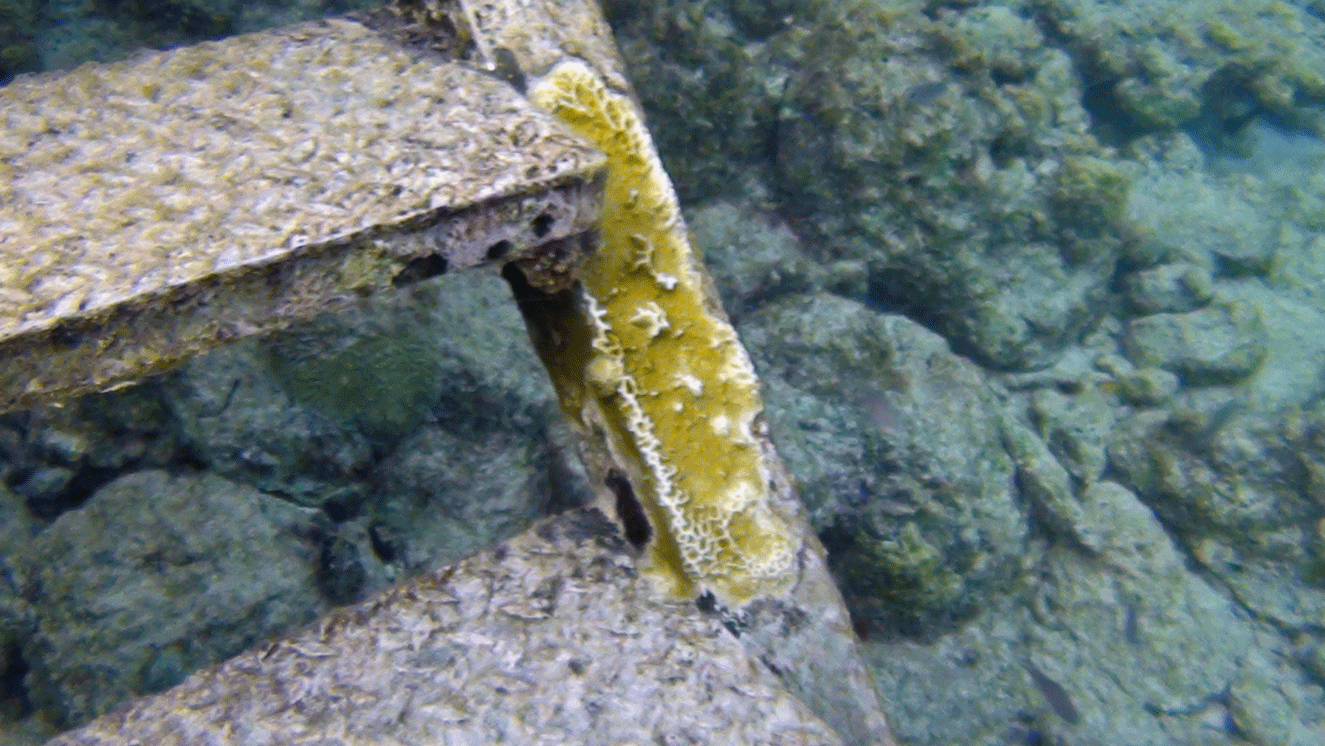 Fire coral has encrusted the ladder that divers and swimmers use to exit the water. It is easy for a foot or ankle that is not protected by neoprene or lycra to brush up against it and cause a severe sting. |
|||||||||||||||
 This fire coral has encrusted a dead coral formation on the reef and takes the general shape of the coral it has covered. |
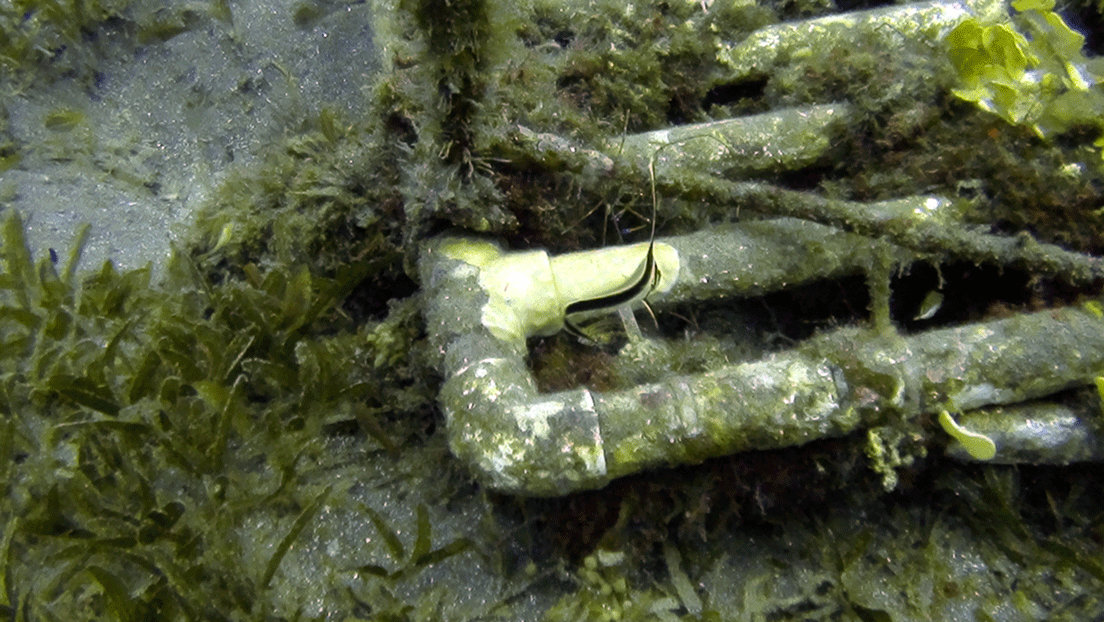 Here, you can see fire coral encrusting the pipe structure behind the Jack Knife Fish. |
|||||||||||||||
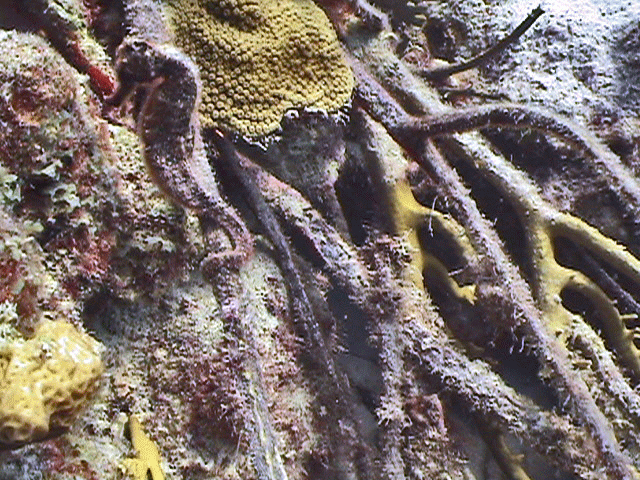 In the right side of this picture you can see dead "stick" coral that has been encrusted by fire coral. Photographers trying to get a picture of this sea horse may be tempted to steady themselves by putting a finger on some dead coral and accidentally end up touching some that has been covered by fire coral. NEVER TOUCH CORAL!! Even if you are a photographer. |
|
Fire Coral has encrusted this mooring stake on the floor of the ocean. | ||||||||||||||
 Fire coral has encrusted much of this dead dichotomous branching coral. |
Most of this artificial reef has been encrusted with fire coral. |
|||||||||||||||
|
While fire coral stings its prey and people, some sea life can live safely in close contact with fire coral. If you stop to look down between the blades of clusters of fire coral you will often see some really interesting fish and creatures. Lots of juveniles use the safety of these formation for protection. |
In some cases such as this sunken Mayan pyramid, the encrusted fire coral looks a lot like a thick layer of satin paint. The edges of the fire coral look like the paint is chipping or pealing off. |
|||||||||||||||
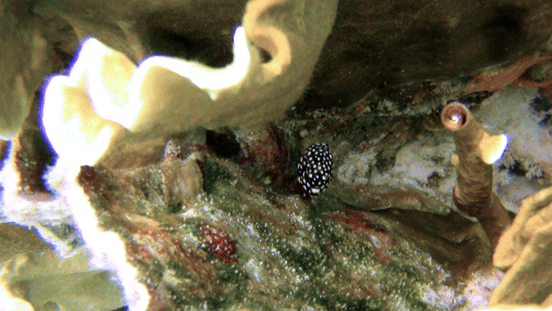 Here a juvenile Trunk Fish hides down between the blades of fire coral. |
This spotted moray eel seems unaffected by the fire coral covering the upper and back side of the opening in the coral that he is resting in. |
|||||||||||||||
|
It is not uncommon to find Christmas Tree Worms living on dead coral or other structures encrusted by fire coral. |
This Secretary Blenny has made his home in a porous rock that has been encrusted in fire coral and seems to enjoy the protection it offers him. |
|||||||||||||||
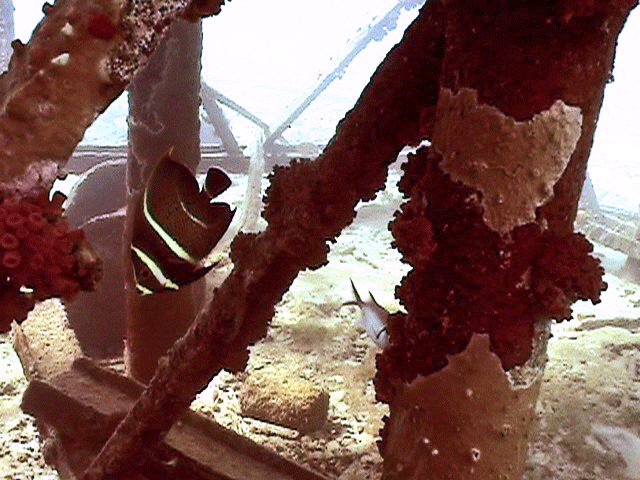 This picture shows pylons of a pier with fire coral encrusting many areas of the structure.
|
This pictures shows many of the cnidae (stingers) extending from
the surface of the fire coral.
|
|||||||||||||||
| NOT FIRE CORAL:
Not all coral that is a golden or mustard color with white tips or edges is fire coral. This is a large formation of Elk Horn Coral. Its color may resemble that of fire coral but the texture of its surface is much different. It is rough with small protruding tubular corallites. This type of coral is found in shallow water where it is exposed to current or surge. |
This is Stag Horn Coral. It is also similar in color to fire coral with white tips but, like the Elk Horn Coral it also has corallites protruding from its surface. |
|||||||||||||||
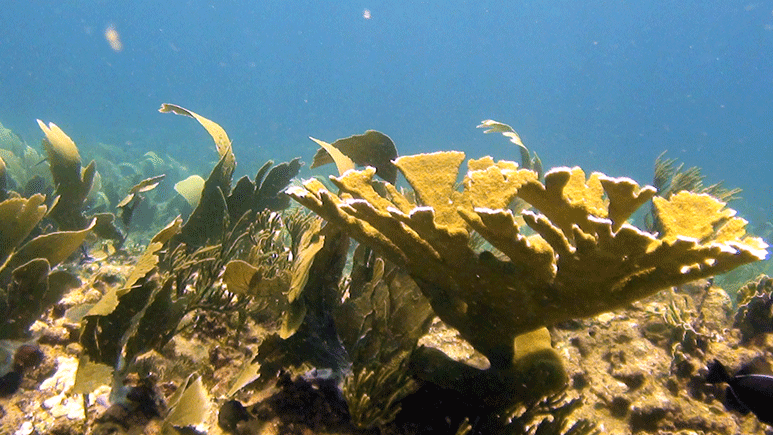 Another example of Elk Horn Coral with white edges and tips. |
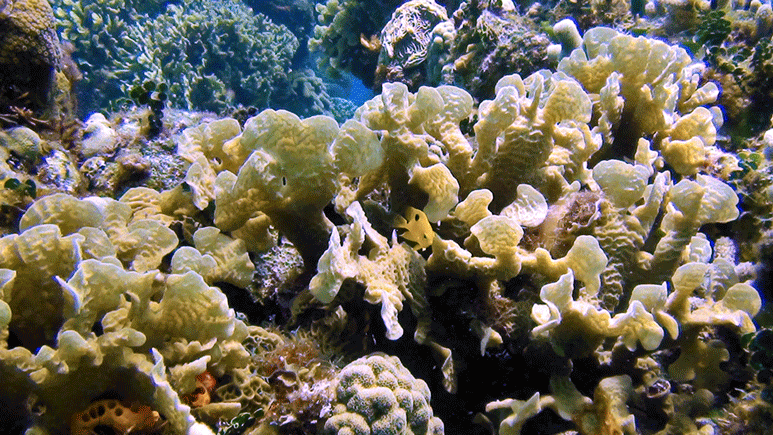 This is Lettuce Leaf Coral. It can look something like blade fire coral but it has rougher, wrinkled-looking surface. Sometimes fire coral can encrust dead Lettuce Leaf Coral. |
|||||||||||||||
|
To see pictures from some of my many dive trips, click on the button
to the right to go to my SCUBA page. It has links to other pages of pictures
and dive reports from many different dive trips over the years.
|
 |
|||||||||||||||
|
References: Boschma, Hulbrand. 1956. Milleporina and Stylasterina. In: Treatise on Invertebrate Paleontology. Part F. Coelenterata (R.C. Moore, ed.) Geological Society of America and University of Kansa Press: F90-F106. Boschma, H. 1948. The species problem in Millepora. Zool. Verhandelingen 1: 1-115. Borneman, E.H. (2001) Aquarium corals; Selection, Husbandry and Natural History. T.F.H. Publications, New Jersey, USA. CITES (June, 2007) http://www.cites.org de Kruijf, Hans A.M. 1977. Individual polyp behavior and colonial organization in the hydrocoralsMillepora complanata (Milleporina) and Stylaster roseus (Stylasterina). Proc 3rd Int Coral Reef Sym 445-51. Gasparini, J.L., Floeter, S.R., Ferreira, C.E.L. and Sazima, I. (2005) Marine ornamental trade in Brazil.Biodiversity and Conservation, 14: 2883 - 2899. Hyman, L. 1940. The Invertebrates. McGraw-Hill, New York. 726 pp. Lewis, John B., and Richard E. Crooks. 1996. Foraging cycles of the amphinomid polychaete Hermodice carunculata preying on the calcareous hydrozoan Millepora complanata. Bull Mar Sci 58: 853-6. Lewis, John B. 1989. The ecology of Millepora: a review. Coral Reefs 8: 99-107. Peter Schuchert (2011). P. Schuchert, ed. "Millepora Linnaeus, 1758". World Hydrozoa database. World Register of Marine Species. Retrieved November 2, 2011. Schonwald, H., Z. Dubinsky, and Y. Achiutuv. 1997. Diel carbon budget of the zooxanthellate hydrocoral Millepora dichotoma. Proc 8th Int Coral Reef Sym 1: 939-46. Stearn, Colin W., and Robert Riding. 1973. Forms of the hydrozoan Millepora on a recent coral reef. Lethaia 6: 187-200. Stromgren, Tor. 1976. Skeleton growth of the hydrocoral Millepora complanata. Limnol. Oceanogr 21: 156-60. Vago, R. et. al. 1998. Colony architecture of Millepora dichotoma Forskal. J Exp Mar Biol Ecol 224: 225-35. Veron, J.E.N. (2000) Corals of the World. Vol. 3. Australian Institute of Marine Sciences, Townsville, Australia. Veron, J.E.N. (1986) Corals of Australia and the Indo-Pacific. Angus and Robertson Publishers, UK. Wood, E.M. (1983) Reef corals of the world: biology and field guide. T.F.H. Publications, New Jersey, USA. Wilkinson, C. (2004) Status of Coral Reefs of the World. Australian Institute of Marine Science, Townsville, Australia. Wood, E.M. (1983) Reef corals of the world: biology and field guide. T.F.H. Publications, New Jersey, USA. |
||||||||||||||||
|
The author: Mike Endrizzi is a veterinarian who loves to scuba dive. He has over 1,100 dives, most in the Caribbean Sea. He enjoys underwater photography and videography. |
||||||||||||||||
